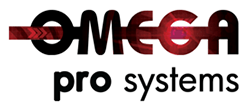According to the general safety principles, and the fact that most of the states in the country requires a good and working sprinkler system for all commercial facilities, we are coming ahead and giving you the best options at good pricing. Some of the states (like Pennsylvania and California) decided to require sprinkler systems in all new residential constructions (the law is constantly changing though). Following that, residential sprinklers became more popular, even if they are not fully required at the states level.
As everybody probably knows, a fire sprinkler system is an active fire protection method, that consists of a water supply system, providing adequate pressure and flowrate to a water distribution piping installation, to which fire sprinklers are connected. Back in history they were only used in factories and large commercial buildings, but nowadays we have many different solutions for homes and small buildings. Fire sprinkler systems are now something common, they are extensively used worldwide, with over 40 million sprinkler heads fitted each and every year.
Sprinklers may be required to be installed by some building codes, or may be recommended by insurance companies just to reduce potential property losses or business interruption. In the United States, building codes for places of assembly, generally over 100 persons, and places with overnight sleeping accommodation (hotels, nursing homes, hospitals, dormitories) usually require sprinklers either under local building codes, as a condition of receiving State and Federal funding or as a requirement to obtain certification (it seems to be essential for institutions who wish to train medical staff).
You may suspect there is a few types of fire sprinkler systems, but have you ever wondered what are the differences between them? We’re here to tell you a little bit about it!
- Wet pipe systems – they are installed more often than all other types of fire sprinkler systems. They also are the most reliable, because they are simple, with the only operating components being the automatic sprinklers and (usually) the automatic alarm check valve.
- Dry pipe systems – the second most common sprinkler system type. Dry pipe systems are installed in spaces in which the ambient temperature may be cold enough to freeze the water in a wet pipe system. They are most often used in unheated buildings, in parking garages, in outside canopies attached to heated buildings or in refrigerated coolers.
- Deluge systems – systems in which all sprinklers connected to the water piping system are open, in that the heat sensing operating element is removed, or specifically designed as such. These systems are used for special hazards where rapid fire spread is a concern, as they provide a simultaneous application of water over the entire hazard. They are sometimes installed in personnel egress paths or building openings to slow travel of fire.
- Pre-action systems – specialized for use in locations where accidental activation is undesired, such as in museums with rare art works, manuscripts, or books; and data centers, for protection of computer equipment from accidental water discharge. They are hybrids of wet, dry, and deluge systems, depending on the exact system goal.
- Foam water sprinkler system – it is a special application system, discharging a mixture of water and low expansion foam concentrate, resulting in a foam spray from the sprinkler. These systems are usually used with special hazards occupancies associated with high challenge fires, such as flammable liquids, and airport hangars.
We are an experienced Commercial and Residential sprinkler systems provider. We always take care of your business and house as good as we can, having on mind your desires, needs and the latest safety rules and technologies. Our technicians are here to help you make your facilities highly protected with the best solutions, so you won’t have to worry about any safety aspects.
Omega’s professionals are quality trained individuals with knowledge of the most revelant safety features, including sperading and constantly improving sprinkler systems technologies.
Our goal is to help you choose the sprinkler system that fits best all your needs for simplicity, reliability and ease of maintenance. We provide simple systems but also ones containing specialized, customizable features (e.g. pre-action systems or concealed sprinkler heads).



